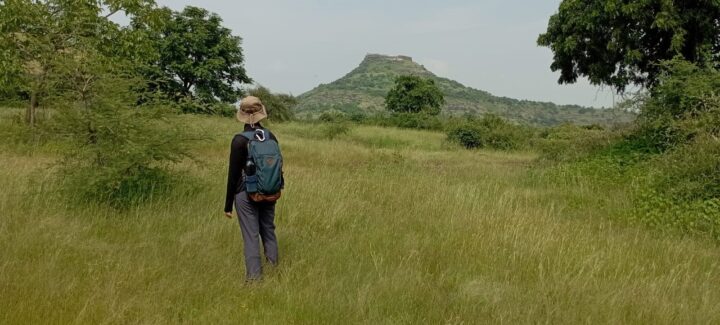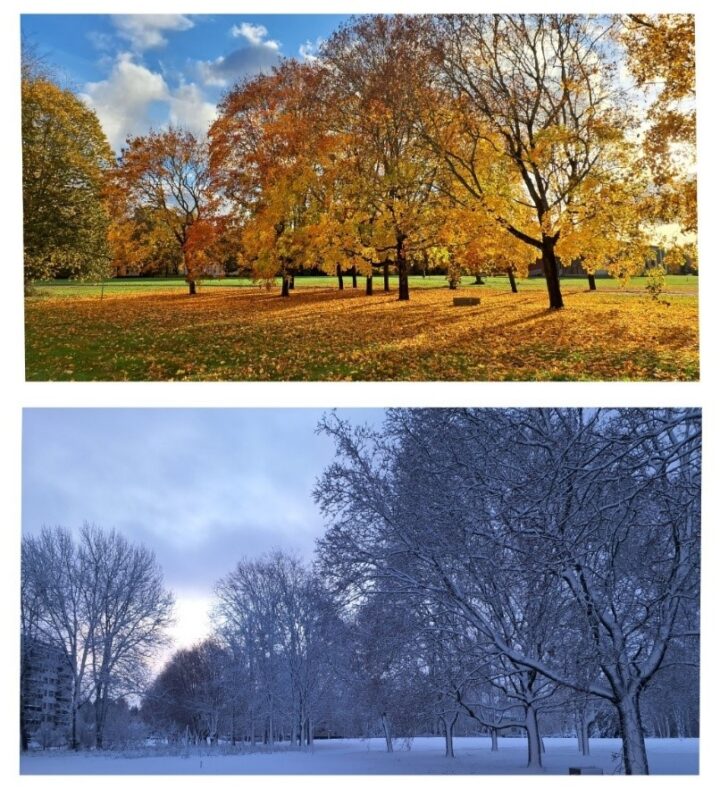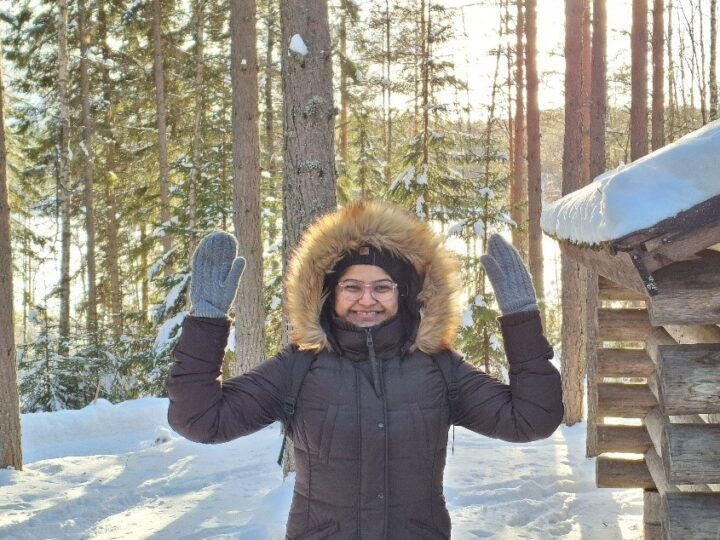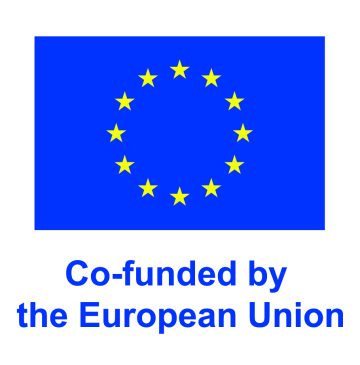From Tropical Fields to Temperate Forests: My journey with Aliens
Behind every story of invasive species is also a story about people—their livelihoods, cultures, and choices. Through my PhD journey from India to Finland, I have learned that protecting biodiversity means listening, adapting, and building management and conservation strategies that truly work for everyone.
🌾 Why I Care About This Topic
I grew up in rural India, surrounded by rice fields, buzzing insects after the monsoon, and small forest patches that felt endless to a child. But those same landscapes also taught me how fragile nature can be. Over time, a patch of forest would be cleared for more farmland. Soon after, the same field would be sold and turned into a cluster of concrete houses.
Watching those forests disappear made me wonder—can we ever find a balance between what people need and what nature needs to survive?
That quiet question stayed with me. During my undergraduate studies, an ecology course introduced me to the idea of “invasive species”—organisms that move to new places, with human help, and reshape the local environment. I was fascinated. The idea that a single species could alter an entire ecosystem sounded like science fiction, yet it was all around us.
Then came the Covid lockdown—a strange time of isolation, but also when I began working on invasive species more seriously. My early fascination soon became a clear direction for my research.
The Solutions for Green and Digital Transition (UTU-GreDiT) programme at the University of Turku offered exactly what I had been searching for: a way to explore invasive species not just through ecology, but also through social understanding.
That is how my story moved from tropical India to the temperate forests of Finland.
🌍 The Bigger Picture: Why Invasive Species Matter
When people hear “invasive species”, they often imagine garden weeds or a few pesky insects. But the truth runs much deeper. Invasive species are one of the leading drivers of biodiversity loss worldwide, and their influence goes far beyond ecosystems.
- They alter habitats, threatening native plants and animals.
- They cause billions of euros in economic damage each year.
- They shape how landscapes look, feel, and even how communities interact with them.
In India, for instance, Lantana camara—a shrub introduced for decoration—has now invaded vast areas of forest. Its flowers look beautiful and harmless, but it chokes native plants, reduces grazing land for animals, and even makes forests more fire-prone. For local people, it is both a boon and a curse—many use it for firewood or weaving crafts.
In Finland, a well-known example is Himalayan balsam, with its tall stems and pink blossoms. It is admired by many for its beauty, but spreads quickly, pushing out native species along riverbanks.
These examples show that managing invasive species is not just about ecology—it is about how people see nature.
Some see these species as villains, others as neighbours, and some as valuable resources. And these perceptions often decide whether conservation efforts will succeed or fail.
“In nature, nothing exists alone.” — Rachel Carson
🔬 My Research Journey
When I first started studying invasive species, my curiosity was mainly ecological. I was fascinated by how these species spread and how they affected native ecosystems. Why does one plant take over an entire forest, while another fails to survive? Those were the kinds of questions that guided my Master’s research.
Before my Master’s, I never really thought about the social side of invasive species. That perspective came later—when I was assisting my senior in conducting interviews for a project. Listening to people talk about invasive species opened my eyes. Some described them as harmful weeds that destroyed crops or forests, while others saw them as useful—sources of shade, firewood, or even income. Hearing both the advantages and disadvantages made me realize how deeply human life and ecology are intertwined.
After finishing my Master’s, I continued exploring this topic while searching for PhD opportunities. But that period was not easy. Rejection letters became routine, and each one chipped away at my confidence. I began to wonder whether I should step away from academia altogether.
Then came the turning point. One day, while working on a project related to invasives, I stumbled upon an advertisement for the UTU-GreDiT doctoral programme in Finland. The position seemed perfect for me—it connected ecology, people, and society, exactly the intersection I wanted to learn about. I applied immediately.
The wait lasted for months. After the interview, when I did not hear back for a while, I was convinced that I had not been selected. Then, unexpectedly, everything changed.
I will never forget that moment. It was May 3rd, 11:14 a.m., and I was standing in the lift when an email notification appeared on my phone. I opened it—and there it was: my offer letter. For a few seconds, I just stared at the screen in disbelief. Then came the rush of joy and relief. After so many closed doors, one message opened a new world.
“A journey of a thousand miles begins with a single step.” — Lao Tzu

📸 From my first fieldwork diaries in India
Within months, I was packing my bags for Finland—my first time living abroad, my first time starting life from scratch, and the beginning of my PhD journey with “aliens”.
❄️ Cultural Shocks and Small Discoveries
Moving to Finland was an adventure full of surprises—some amusing, some humbling, all unforgettable.
- From tea to black coffee: Back home, I couldn’t start my day without chai. In Finland, everyone seemed powered by coffee. It took time, but soon enough, black coffee became my morning ritual.
- Embracing silence: In India, life is full of noise—markets, neighbours, children playing. In Finland, silence fills the space between conversations. At first, it felt lonely, but eventually, I began to cherish it.
- Kindness in daily life: I was touched by how polite and respectful people are here. From saying “kiitos” (thank you) to holding doors open, these small gestures make life warmer.
- Falling in love with winter: I had seen pictures of snow, but seeing it fall outside my window for the first time was magical. Walking on snow, feeling the crunch under my boots, I realized winter is not just cold—it’s peaceful and deeply beautiful.
These cultural shocks reshaped my habits, my mindset, and my appreciation for nature. Starting from scratch in a new country was not easy, but it taught me resilience, patience, and adaptability.
🌿 What I Found (So Far)
My research explores how people perceive invasive species, and what I have found is more complex and fascinating. Some admire invasives for their beauty or usefulness. Others see them as threats to native biodiversity.
But beyond opinions, I discovered that social and economic conditions strongly influence how people view invasive species. For instance, according to studies I reviewed, a farmer who depends on an invasive tree for firewood might see it as a valuable resource, while a conservationist may view the same tree as a threat to biodiversity.
In other words, invasive species are not just ecological phenomena—they are social reflections. They reveal how our livelihoods, cultures, and priorities influence how we relate to nature.
Sometimes, people’s perceptions matter more than ecological facts. If local communities do not see a species as a problem, it is nearly impossible to get their support for managing it. Understanding this is crucial for creating effective, fair management and conservation policies.
🌏 Why It Matters: Beyond Academia
When people hear “invasive species,” it might sound like a niche academic topic—but it affects everyone.
- If your garden gets overrun by a fast-growing plant, you have seen it.
- If your city spends money controlling weeds, you have paid for it.
- If food prices rise because pests damage crops, you have felt it.
Invasive species affect the economy, culture, and environment alike.
This is why management and conservation cannot stay confined to research papers or policy offices. We need solutions that are both scientifically sound and socially accepted—approaches that protect biodiversity while respecting people’s needs and knowledge.
“The greatest threat to our planet is the belief that someone else will save it.” — Robert Swan
💬 Surviving Finland 101: Lessons Beyond the Lab
If you are planning to study or work in Finland, get ready for an experience that will challenge and transform you in beautiful ways.
- Embrace the silence. It’s not emptiness—it’s calm. Learn to listen to it; you might hear your best thoughts there.
- Don’t fear the winter. Yes, it is long and dark, but also magical. Find joy in small things—the crunch of snow, hot coffee, or the first hint of spring light.
- Ask for help. Finns may seem reserved, but they are incredibly kind and helpful once you reach out.
- Appreciate nature. Nature is not a weekend escape—it’s part of everyday life. Go for walks, sauna, pick berries, sit by lakes. It’s healing.
- Be patient with yourself. Starting over in a new place is tough. But every challenge—from paperwork to language barriers—teaches you resilience.
Living here has shown me that growth does not always come from noise or speed—it often comes from quiet persistence.

📸 Same view, different seasons—how quickly landscapes can change, just like perspectives
🎓 Surviving (Thriving… Still Under Review) in a PhD
Doing a PhD is a lot like hiking in unfamiliar terrain. Some days are full of discovery, others full of doubt. What keeps me going are small lessons:
- Coffee instead of chai. It’s a symbol of adaptation—and survival!
- Celebrate small wins. Whether it’s finishing a section of writing or simply getting through a tough week, small victories count.
- Silence is strength. I have learned to see quiet moments not as isolation, but as space to think and recharge.
- Stay connected with friends and family. Even a short call or message can lift your spirits on tough days and remind you that you are not alone in this journey.

📸 Enjoying my first Finnish winter in Jyväskylä—at my first PhD conference
🌲 A Personal Reflection
Living in Finland has changed the way I think about nature. Here, forests, lakes, and silence are part of daily life—not separate from it. People do not just visit nature; they live with it.
This made me reflect on my own beginnings—those Indian landscapes where forests became fields and fields became buildings. The choices we make, collectively and individually, shape the world around us.
My research on invasive species is one way of understanding those choices. It taught me that management and conservation is not only about plants and animals—it is about people, their perceptions, and their relationship with the environment.
🌱 Conclusion: An Invitation to Think
My journey has been anything but straight. It began with curiosity in an ecology class, deepened during Covid, evolved into a Master’s thesis, almost ended in disappointment, and then found new life through one unexpected opportunity—UTU-GreDiT.
So, the next time you come across a plant or animal that “doesn’t belong”, pause for a moment. Is it truly an invader—or simply another traveller adapting to a new home?
Aliens may not arrive in spaceships, but they are already here, quietly living among us—in our gardens, rivers, and forests. By trying to understand them, we also learn something about ourselves: how we adapt, survive, and coexist.
Because in the end, management and conservation are not just an academic pursuit—it is a shared human responsibility.
“Look deep into nature, and then you will understand everything better.” — Albert Einstein
🔗 Connect with me on LinkedIn to follow my research journey
 Co-funded by the European Union. Views and opinions expressed are however those of the author(s) only and do not necessarily reflect those of the European Union or European Research Executive Agency (REA). Neither the European Union nor REA can be held responsible for them.
Co-funded by the European Union. Views and opinions expressed are however those of the author(s) only and do not necessarily reflect those of the European Union or European Research Executive Agency (REA). Neither the European Union nor REA can be held responsible for them.
